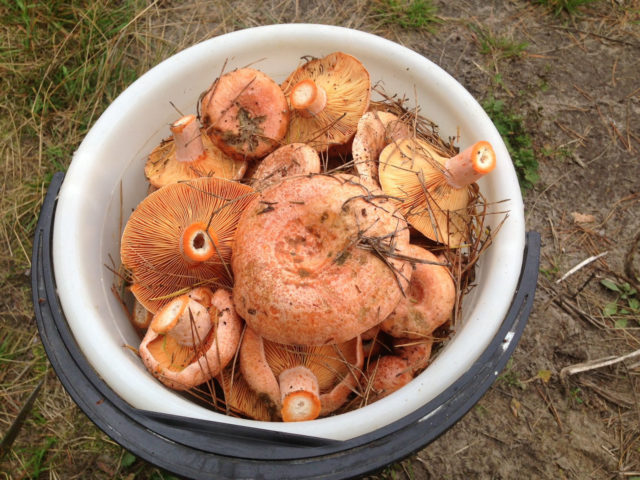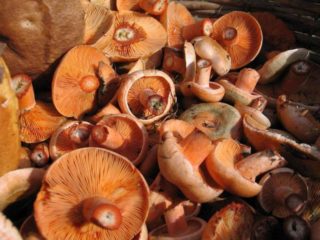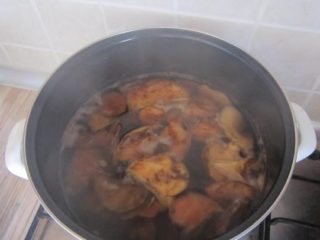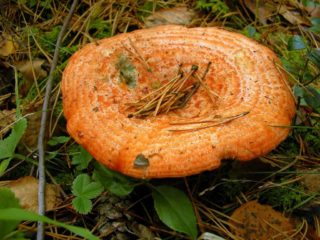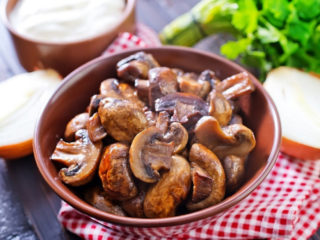Content
It is not difficult to clean mushrooms with mushrooms, although every lover of "quiet hunting" has his own opinion on this matter. Someone claims that the fruiting bodies of this variety do not need thorough washing, while someone, on the contrary, speaks of the need for soaking.
Are mushrooms cleaned
When deciding whether it is necessary to clean the mushrooms before cooking, it is worth remembering that this mushroom variety grows in the forest, so there is no need to talk about the complete purity of the fruit bodies. Mushrooms still need minimal cleaning. It is also important not to forget that any crop harvested near highways and industrial plants may contain hazardous salts and metals that have been absorbed into the mushrooms from the soil. In this case, experts recommend compulsory soaking, although for saffron milk caps it should also not be long.
Each housewife uses her own methods of stripping mushrooms. Someone must soak the mushrooms before cooking, someone uses the dry cleaning method. In fact, this variety of fruiting bodies is not problematic. Dirt often sticks to the smooth and rather slippery caps of the mushrooms, so debris and dust do not linger on them. In addition, mushrooms are not bitter (they do not contain milky juice), so they do not need to be soaked for a long time. The main accumulations of dirt are located under the cap in the plates, therefore it is these places that should be given special attention.
How to peel mushrooms
Before learning how to properly peel mushrooms, you need to remember a number of rules:
- It is not worth delaying the cleaning and processing of fruit bodies, since the cut harvest in the room quickly becomes unusable. In addition to the fact that all the forest aroma inherent in them disappears from the mushrooms, they can also become dangerous to human health. Therefore, the treatment must be taken immediately, within the first three hours.
- The method of cleaning directly depends on how the mushrooms will be used in the future. For example, soaked products are not suitable for drying, so the fruit bodies just need to be cleaned with a dry sponge. If stewing or pickling is supposed, then the harvested crop can be safely washed.
- Experienced mushroom pickers advise to start cleaning mushrooms already in the forest. This will save you time for home cooking. For cleaning, you only need a sharp knife, which is used to cut the finds. It is necessary to cut out all problem areas of the fungus, remove the dirt adhering to the stem, inspect the raw material for the presence of worms.
Video review of how to peel mushrooms before drying or dry salting and what changes occur with the harvested crop during long-term storage:
Dry cleaning process:
- Put the mushrooms in a suitable container, place dishes next to them for storing the cleaned raw materials.
- Inspect each specimen for damage and, if necessary, cut them off.
- Use a kitchen sponge or toothbrush to clean off adhering dirt, debris and other dirt from the surface of the cap and from its inside. If you cannot do this with a dry inventory, then the sponge can be slightly moistened in plain water.
- Using a brush or knife, carefully scrape off any remaining soil and other dirt from the stem.
- Inspect the raw material again for damage and worms.
- Send the cleaned product to a clean container.
Is it possible to wash mushrooms before salting
Like many other mushrooms, saffron milk caps can be washed. As mentioned above, before dry salting, the crop should not be exposed to water. But at the same time, the products must be thoroughly cleaned. There are also two more options for salting - hot and cold.The choice of whether you need to wash the mushrooms depends on the chosen method.
If the cold pickling option is chosen, which excludes the heat treatment of raw materials, the mushrooms must be carefully prepared for the process. This is important to ensure that the finished product does not deteriorate and harm human health.
The cleaning process is as follows:
- The first step is to free the harvested crop from leaves and dirt that have adhered to the fruit bodies. In this case, special attention must be paid to the plates on the inside of the cap. Debris can be cleaned off with a damp sponge or cloth. It will be convenient to arm yourself with an old toothbrush for this.
- Then the stem of the mushroom is processed. The lower part must be cut off, the rest of the surface must be cleaned of dirt.
- Place the mushrooms in water for 30 minutes.
- Drain the liquid from the mushrooms.
- Dilute a salty water solution, where there are 3 tbsp for 5 liters of liquid. l. salt.
- Place the processed crop in it for an hour so that all the smallest particles of sand, dust and other debris come out of the fruit bodies.
- Drain the water again.
- Rinse the mushrooms under running water.
- Let the raw materials drain and dry a little.
If it is planned to carry out hot salting, in which the mushrooms are thermally exposed, then the process of preparing the raw material looks simpler.
You need to clean mushrooms for cooking in this way:
- Remove debris and dirt from the crop.
- Rinse products.
- Place in an enamel bowl.
- Pour in water, add a little salt and citric acid, which will help preserve the natural color of the fruit bodies.
- Boil for 15 minutes, drain in a colander.
How to wash mushrooms
Most experienced housewives agree that before cooking mushrooms, they must be washed. Regardless of what is planned to be done with the raw materials in the future (stew, fry or boil), the harvest harvested in the forest must be freed from accumulated dirt and microbes. However, any culinary specialist knows about the ability of these mushrooms to absorb moisture. Therefore, it is important to adhere to the golden mean in the process of cleaning saffron milk caps: contact of the product with water should not be prolonged.
You can apply a special algorithm for washing fruit bodies:
- Cleaning saffron milk caps from adhering leaves with a sponge.
- Cutting off damaged areas and removing dirt from the leg.
- Washing fruit bodies under cold running water. It is better to take each mushroom separately for this. This makes it easier to make sure of the effectiveness of washing and to protect raw materials from unnecessary contact with moisture.
Conclusion
Peeling mushrooms is not as difficult as it might seem at first glance. The main thing is to immediately prepare the raw materials for further processing, without letting them deteriorate in a warm room.
